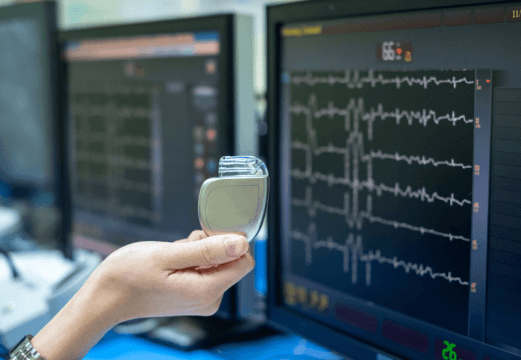Transcatheter aortic valve replacement (TAVR) has proven to be effective in treating severe aortic stenosis. The volume of TAVR has been increasing year after year, surpassing the number of surgical aortic valve replacement procedures. However, the risk of requiring a permanent pacemaker remains one of the most significant complications associated with this procedure.

A leadless pacemaker is a small, capsule-shaped device implanted in the apex of the right ventricle, which reduces complications related to transvenous pacing leads. Since a large proportion of conduction disorders resolve during patient follow-up, leadless pacemakers offer a good alternative. However, there is limited clear data on this therapeutic strategy after TAVR.
The aim of this multicenter retrospective study was to analyze the trend in the use of leadless pacemakers after TAVR and to compare short- and mid-term outcomes between leadless pacemakers and transvenous pacemakers after the procedure.
The primary endpoint (PEP) included in-hospital outcomes and a two-year follow-up of all-cause mortality, heart failure (HF) hospitalization, infectious endocarditis, and device-related complications. In-hospital outcomes included thrombosis and embolism, perforation, tamponade, puncture site complications, and device-related issues.
Read also: Failed Thrombus Aspiration in STEMI, and Impact.
Researchers analyzed a total of 10,388 patients, of whom 7% received a leadless pacemaker and 93% a transvenous pacemaker. Between 2017 and 2020, the proportion of leadless pacemakers implanted after TAVR increased 3.5-fold. Patients with leadless pacemakers had a higher number of comorbidities, such as atrial fibrillation and end-stage renal disease. After adjusting for confounding factors, patients with leadless pacemakers experienced a lower rate of in-hospital complications compared with those who received transvenous pacemakers (7.2% vs. 10.1%; P = 0.014).
In the mid-term, there were no significant differences in all-cause mortality (hazard ratio [HR]: 1.13; 95% confidence interval [CI]: 0.96-1.32; P = 0.15), HF hospitalization (HR: 0.89; 95% CI: 0.74-1.08; P = 0.24), or infectious endocarditis (HR: 0.98; 95% CI: 0.44-2.17; P = 0.95) between the two groups. However, leadless pacemakers were associated with a lower risk of device-related complications (HR: 0.37; 95% CI: 0.21-0.64; P < 0.001).
Conclusions
The use of leadless pacemakers for the treatment of conduction disorders after TAVR is on the rise. While there were no differences in mid-term all-cause mortality, leadless pacemakers were associated with a lower rate of in-hospital and device-related complications. In this vulnerable population, at a high risk for complications, the use of leadless pacemakers could be a promising option compared to traditional pacemakers.
Original Title: Comparison of Patient Outcomes Between Leadless vs Transvenous Pacemakers Following Transcatheter Aortic Valve Replacement.
Reference: Hiroki A. Ueyama, MD et al JACC Cardiovasc Interv 2024;17:1779–1791.
Subscribe to our weekly newsletter
Get the latest scientific articles on interventional cardiology





